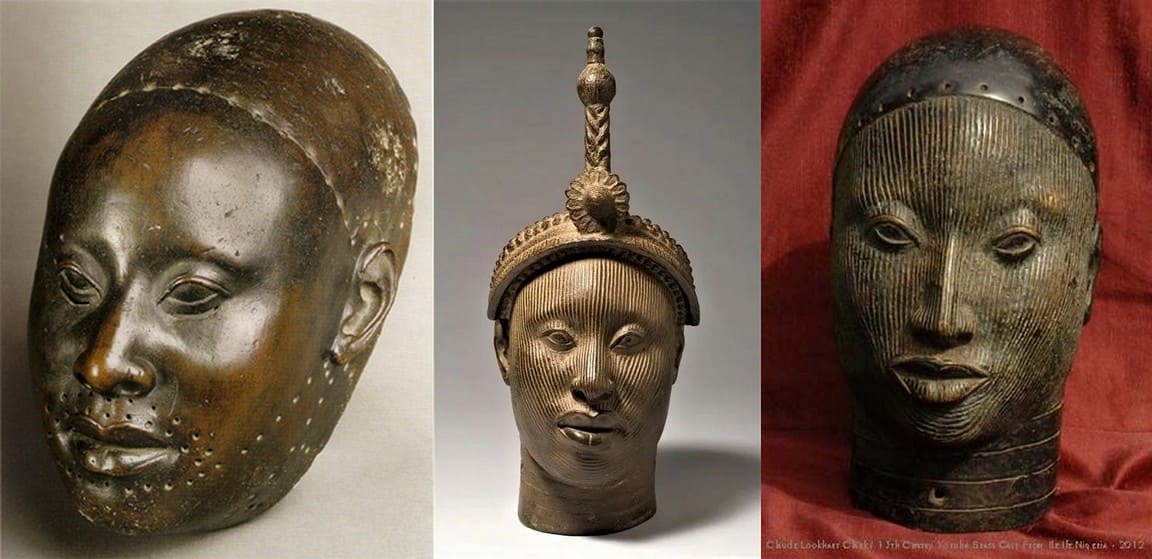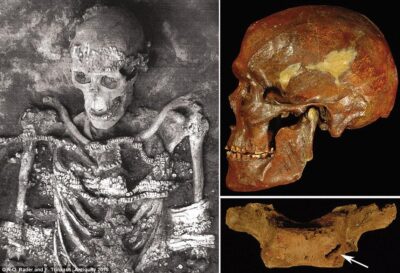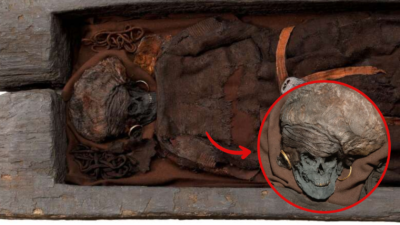In 1938, a serendipitous discovery amidst the humdrum of construction in Ife, Nigeria, challenged the Western perspective of African art and its heritage. During routine house building activities, workers stumbled upon an extraordinary cache of artifacts that would rewrite history – seventeen brass and copper heads along with the upper half of a brass figure, all dating back to the 14th and 15th centuries CE.
The Ife heads, as they came to be known, are not mere remnants of the past; they are masterpieces of metalwork, showcasing a level of sophistication and realism that stunned the world. These pieces emanated from the Yoruba city of Ife, renowned as a spiritual and royal center, now revered as the birthplace of one of the most advanced civilizations in sub-Saharan Africa.

A Clash with Conceptions
For long, Western narratives on African art were tinged with preconceptions of primitivism and simplicity. However, the discovery of the Ife heads shattered these notions. The intricate craftsmanship depicted in the lifelike facial features, the naturalistic proportions, and the elaborate hairstyles and headgear represented a pinnacle of artistic achievement that demanded a radical reevaluation of African creative prowess.
The Artistic Techniques

The heads were created using the lost-wax casting technique, an intricate process where a model is sculpted in wax and encased in clay. Upon heating, the wax melts away, leaving a cavity into which molten metal is poured, forming the final piece. This method, requiring considerable skill and knowledge of metallurgy, is a testament to the technological advancements of the Ife civilization.
Cultural Significance

These heads are believed to represent rulers of Ife, immortalized in metal to honor their legacy and preserve their memory. The lifelike depictions are indicative of the deep respect for individuality and achievement in Ife society. They were likely used in ancestral worship, a practice deeply rooted in Yoruba culture, underscoring the connection between the divine, the rulers, and their lineage.
mpact on Modern Understanding
The Ife heads upended previously held assumptions, compelling historians and art enthusiasts alike to acknowledge the complexity and finesse of African civilization long before European contact. The artworks stand as irrefutable evidence of a rich cultural tradition and the high esteem in which artistry was held in the region. Their discovery was a pivotal moment, heralding a newfound appreciation for the sophistication of African societies.
Legacy and Preservation
The Ife heads have since been pivotal to the cultural identity of the Yoruba people, symbolizing a link to a glorious past and an enduring legacy. Museums around the world now proudly display these treasures, facilitating a broader dialogue about the diversity and depth of African art. Their preservation continues to be of paramount importance, not only for Nigeria but for the collective heritage of humanity.
A Symbol of Pride and Precedence
For Nigerians, and indeed for Africans everywhere, the Ife heads represent a source of national pride and a concrete symbol of a sophisticated artistic tradition that predates Western influence. The pieces assert the continent’s place as a cradle of civilization and a reservoir of human creativity and ingenuity.
Conclusion
The brass and copper heads of Ife have become icons of cultural resilience and serve as a reminder that history is often told in a multitude of voices, with artifacts like these challenging us to listen more closely. The Ife heads are not just relics; they are storytellers, custodians of a past that continues to enlighten our understanding of the diverse tapestry that is human history.











